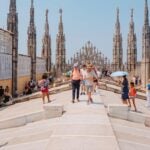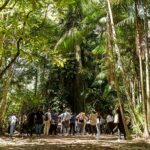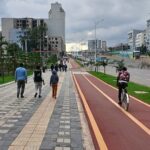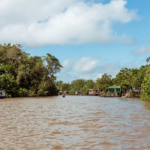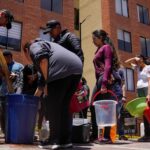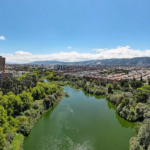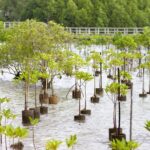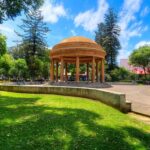Posts tagged with 'natural infrastructure'
Much of Europe sweltered in August 2025 as a heat dome spread across the continent, pushing peak afternoon temperatures to over 40 degrees C (104 degrees F) in France and Spain. Meanwhile, parts of Greece, Turkey and Albania battled historic and devastating ...

In a city, a grassy park might be a place to stretch out with a book, an asphalt road your route to work, a building wall a canvas for a mural. But beyond their familiar roles, each of these surfaces ...

With about 464 millimeters of rainfall per year — less than half the global average — South Africa is one of the driest countries in the world. Its semi-arid climate, uneven rainfall distribution and persistent droughts leave the country facing chronic water ...

In Gauteng Province, the Jukskei River winds its way through the heart of Johannesburg’s inner-city neighborhoods, informal settlements and suburban areas, eventually joining the Crocodile and Limpopo rivers before emptying into the Indian Ocean. One of the biggest waterways in ...

South Africa’s cities face growing threats to their water resources, especially rivers, as rapid development and climate change undermine the health of water systems and the ecosystem services they provide. Urban areas are particularly vulnerable to serious flood risks during ...

Africa’s cities, from large metropolises to smaller towns, are increasingly characterized by growing urban sprawl. Kinshasa, Democratic Republic of Congo, is expanding by about 2,000 people and 5 hectares (10 football fields) every day, according to a World Bank estimate. Kumasi, an intermediary ...

For the 21 million residents of Lagos, Nigeria, climate change is not a distant concept — it is a current reality. Over the past decade, the city has experienced devastating floods, exacerbated by the loss of over half of its wetlands ...

Amid the vast Amazon River delta, Belém, Brazil, sits at the intersection of the urban and natural worlds. A network of waterways and islands home to resources like açaí and cacao surround the city, serving as a critical port for ...

Cities are not just places where people live—they are interconnected networks of people, services and economic activity. A city is a system of systems, bringing together transportation, energy, buildings, water, waste management and more. Transforming these interconnected systems is vital ...

Departing from the Amazonian city of Belém, Brazil, in a speedboat, it takes around 10 minutes to reach the shores of Combu Island. As the skyline fades into the distance, the lush, green environment of the island comes into view ...

Bogotá, Colombia is in the throes of a water crisis. After several months of dry weather caused by El Niño, the Chingaza reservoir system, which provides 70% of Bogotá’s water, reached its lowest level in history. The city’s over 8 million residents are ...

The Guacheneque Páramo, where the Bogotá River originates, represents the second largest source of drinking water for the city of Bogotá, Colombia. It is a key ecosystem that supplies water to approximately 25% of the city’s 7 million inhabitants. However, due to ...

The new Intergovernmental Panel on Climate Change report highlights the enormous potential of nature to reduce the risks of climate change and build resilience. Political momentum is building for this approach. For example, 137 countries committed in 2021 to collectively end forest loss and land ...

Costa Rica is world-renowned for its biodiversity, and eco-tourism is a large contributor to the national economy and local livelihoods. Many visitors may catch only a glimpse of Costa Rica’s cities through a car window while being whisked between the ...

EDITOR’S NOTE: Sustainable Food Production for a Resilient Rosario won the 2020-2021 Prize for Cities on June 29, 2021. Learn more here. (June 29, 2021) City life can be deeply unfair. This was true before the COVID-19 pandemic exposed just how ...












